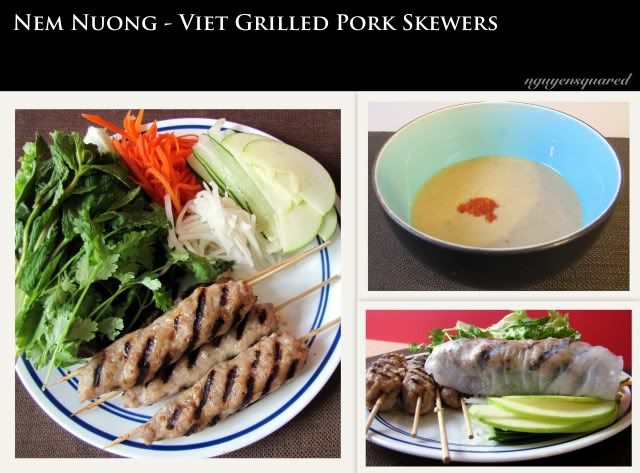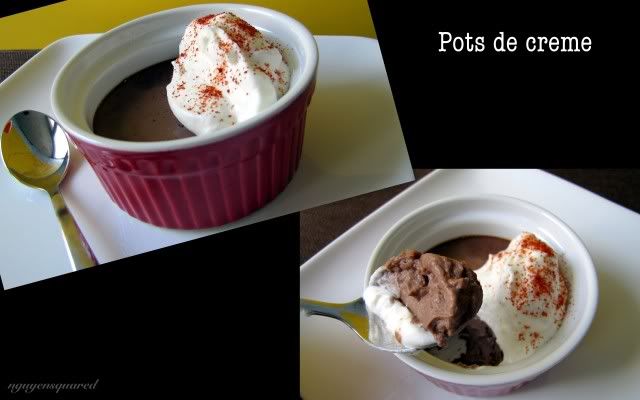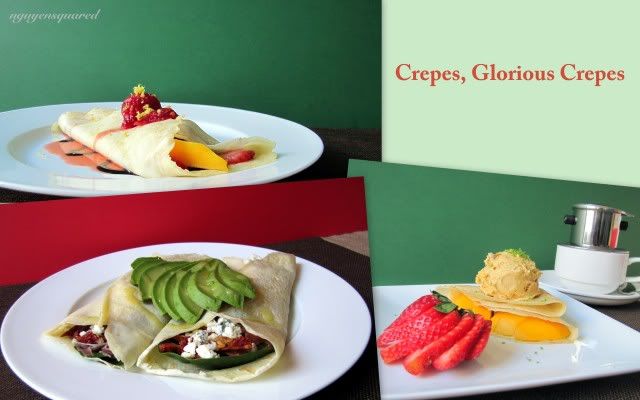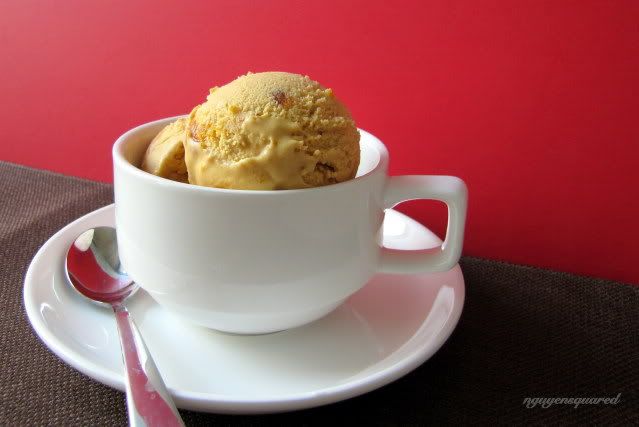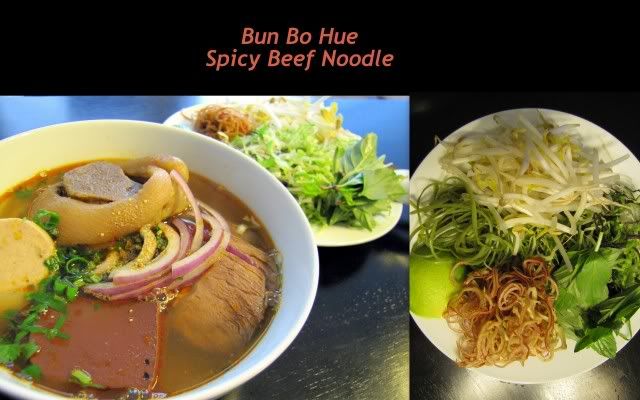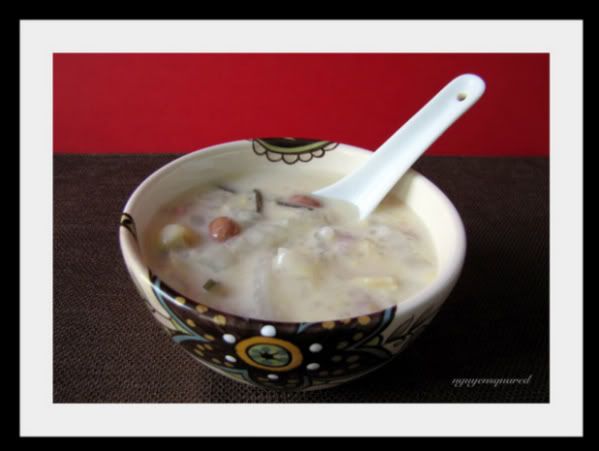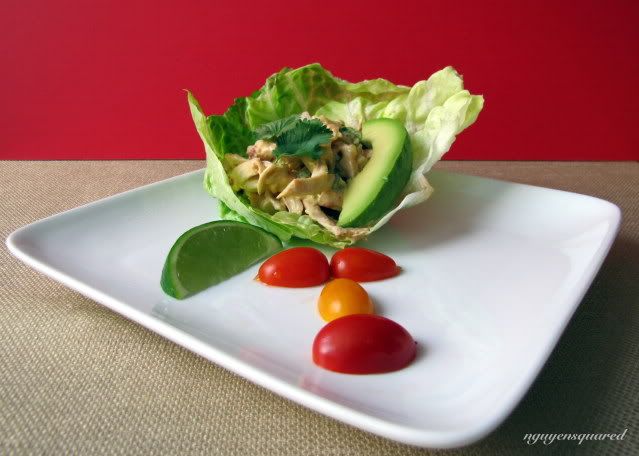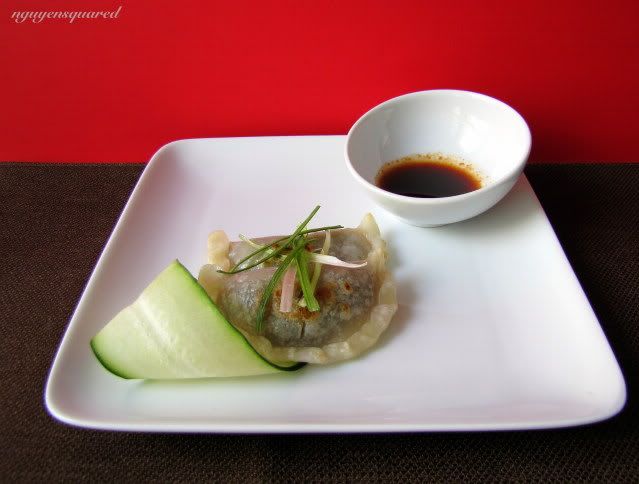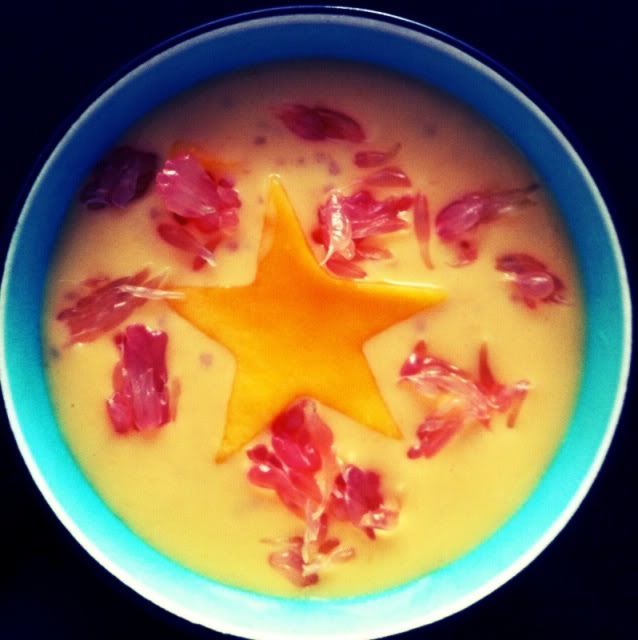I think Vietnamese are obsessed with rice papers, we can wrap almost anything in rice papers, and then dunk them in sauces before savoring them. Many of these wraps have special names by which Vietnamese identify ingredients as well as methods of cooking. Nem nướng is one of them and it happens to be one of my favorites.
Rumor has it that nem nướng originates from Khanh Hoa, a province along the central coastal area. I don't know when nem nướng migrated to my hometown nor do I remember my first time eating it but I do know I have always loved this dish. Later on, people added served fried rolled rice papers along to create a crunch when you bite into the wrap. I personally have never been a fan. Plus, the fried rice papers tend to be overly oily. I also learned later that in some areas, these fried rice papers also contain tiny shrimps.
When I was still at home, this was something we only got during special occasions because it wasn't cheap. (I don't know why we never made it at home hmm.) Then I went away for school and whenever I came back for a visit, my family always made sure I got to eat it at least once before I left again.
I have never eaten nem nướng anywhere else in Vietnam. I'm funny that way. I can be adventurous enough to try completely new cuisines but when it comes to some dishes that I dearly love, I only want to eat them at places that I always eat at. I fear eating them somewhere else would spoil the whole thing for me. Of all the years I have been in the US, I only ate nem nướng once and it was ok, not outstanding. It is also in the US that I learn nem nướng could be served with vermicelli as a noodle dish or as filling in Vietnamese sandwiches. In Vietnam (or at least in my hometown), it is exclusively served on its own, wrapped in rice papers with lettuce and herbs.
I often craved for the nem nướng I can get in my hometown. That is, until I tried making it for the first time ;) I don't know if I've gotten so used to my own cooking or if the quality of nem nướng at my fav store back home has gone down the hill over the years but now it's no longer the first thing I want to eat once I get home.
To be honest, the recipe I'm going to write down below is still just an approximation because I do a lot of tasting and modifying along the way that I tend to lose track of how much of what has been added so please bear with me. I have to say that it took great self-discipline from me to take the photos you see here. The moment I was done grilling my skewers, all I wanted to do was sitting down and devouring them. But for the sake of my readers (I don't know if you actually read but I assume you do, just for my ego's sake), I tried so hard to pretend my nostrils weren't under attack by General Aroma. So here it is:
When I was still at home, this was something we only got during special occasions because it wasn't cheap. (I don't know why we never made it at home hmm.) Then I went away for school and whenever I came back for a visit, my family always made sure I got to eat it at least once before I left again.
I have never eaten nem nướng anywhere else in Vietnam. I'm funny that way. I can be adventurous enough to try completely new cuisines but when it comes to some dishes that I dearly love, I only want to eat them at places that I always eat at. I fear eating them somewhere else would spoil the whole thing for me. Of all the years I have been in the US, I only ate nem nướng once and it was ok, not outstanding. It is also in the US that I learn nem nướng could be served with vermicelli as a noodle dish or as filling in Vietnamese sandwiches. In Vietnam (or at least in my hometown), it is exclusively served on its own, wrapped in rice papers with lettuce and herbs.
I often craved for the nem nướng I can get in my hometown. That is, until I tried making it for the first time ;) I don't know if I've gotten so used to my own cooking or if the quality of nem nướng at my fav store back home has gone down the hill over the years but now it's no longer the first thing I want to eat once I get home.
To be honest, the recipe I'm going to write down below is still just an approximation because I do a lot of tasting and modifying along the way that I tend to lose track of how much of what has been added so please bear with me. I have to say that it took great self-discipline from me to take the photos you see here. The moment I was done grilling my skewers, all I wanted to do was sitting down and devouring them. But for the sake of my readers (I don't know if you actually read but I assume you do, just for my ego's sake), I tried so hard to pretend my nostrils weren't under attack by General Aroma. So here it is:
INGREDIENTS:
Make about 6-8 servings
For the meat:
2 lbs ground pork*
1 medium onion
6 cloves garlic
2 Tsp honey
2 Tsp corn starch
4 Tsp fish sauce
1 Tsp fresh ground white pepper
Skewers, soaked overnight
Roasted rice powder (optional)
Pickled carrots and daikon (recipe at the end)
Green/red leaf lettuce
1 cucumber, thinly sliced lengthwise
2 granny smith apple, thinly sliced**
Herbs: cilantro, mint, Viet basil, chives, etc.
Rice papers
For the dipping sauce:
1/3 cup mung beans
1/3 cup glutinous rice
1 Tsp oil
1 large clove garlic, finely minced
11/2 Tsp peanut butter
Sugar
Salt
Fermented soy bean paste (Tuong Cu Da) (optional)
Some ground pork (optional)
Annatto seeds (optional)
** Back home, this dish is served with sliced star fruit and young banana. I find granny smith apples to be a wonderful substitute for star fruit.
METHOD:
To make the meat skewers:
*I find that the ground pork available at grocery store contains too much fat so I normally get half ground pork and half lean pork and then grind it myself at home. It's healthier this way. However, the downside is that the pork is less juicy and so I make up for that with the onion.
Process the ground pork, onion, and garlic together. Transfer to a bowl. In a small bowl, mix together the corn starch, honey, pepper, and fish sauce. Add this mixture to the ground meat and mix well. (I have a strong suspicion that the owners of many nem nuong places in my hometown add food coloring to the marinade too because I can't seem to be able to reproduce the color. But it could just be my lack of skills, who knows.) At this point, I normally heat a small non stick skillet to cook a bit of the meat mixture to see if it tastes good. Marinate overnight in the refrigerator. You can get away with marinating it for a few hours but I find that it's best left overnight.
Form the marinated meat into sausages about 4in long and put the skewers through. (Here you have the option of making really thin skewers so that you can just pull one off and place in your roll later or form slightly larger ones then slice lengthwise later. I find slicing my grilled pork lengthwise makes it easier to wrap as there is a flat edge.) Cook the skewers on a bbq or broil in the oven. Broiling tends to make the meat drier. My solution (as I don't have an outdoors bbq) is to use a griddle over my gas stoves. To prevent sticking, lightly brush the skewers with oil before cooking.
To make the dipping sauce:
Soak the mung bean and glutinous rice in water for about 30min. Cook until tender. If you are lazy, you can cook both together. Transfer the cooked rice and beans into the blender (but do not add too much water), add peanut butter and process until smooth. In a sauce pan, heat the oil on medium heat. If you prefer some color in your dipping sauce, bleed the annatto seeds in the hot oil. Remove the seeds. Add the garlic and cook till fragrant, about 30s. Add the ground meat if you choose to use it. Fry and stir constantly to break up the meat into tiny pieces. Add the bean and rice puree. Lower the heat, add the soy bean paste and season with salt and sugar to taste. (Sometimes I season the dipping sauce with condensed milk in place of sugar.) Stir constantly to prevent burning. Cook for about 2-3 min. The sauce should have the consistency of a creamy soup. Remove from heat.
Serve the grilled pork skewers with vegetables. Provide a large bowl of water for guests to soften the rice papers. Place the vegetables on a corner of the rice paper, fold 2 sides in, roll while keeping a tight hold on the paper. Before getting to the end of the paper, place the grilled pork and continue rolling. You may want to place the pork together with the vegetables but your roll won't look as appetizing ;) There is no trick to making wraps/rolls except the one simple-but-hard-to-follow rule: do not, and I repeat, DO NOT, put too much on your rice paper.
Enjoy!!!
To make the pickled carrots and daikon:
Pickled carrots and daikon are found in many Viet dishes. The size of the pickles vary from dish to dish but the principle is the same. For this dish, you want your pickles to have somewhat a prominent presence so julienne both carrots and daikon. Here, the largest size of a mandolin slicer is perfect. (To serve pickles in vermicelli, for example, you want smaller cuts, i.e. medium size on the mandolin slicer.) You might find that daikon has too strong an aroma. What I do with it is that I mix the julienned daikon with salt and let it stand for about 30min. I then rinse the daikon well and then squeeze out as much liquid as I can before putting it into my pickling liquid.
To make the pickling liquid: mix together one part rice vinegar and 1 part sugar. Place the carrots and daikon in a container, pour the liquid over the carrots and daikon. Cover and refrigerate. This keeps for at least a week. I can't tell if it's good for a longer period since I always finish it before the week is over.
